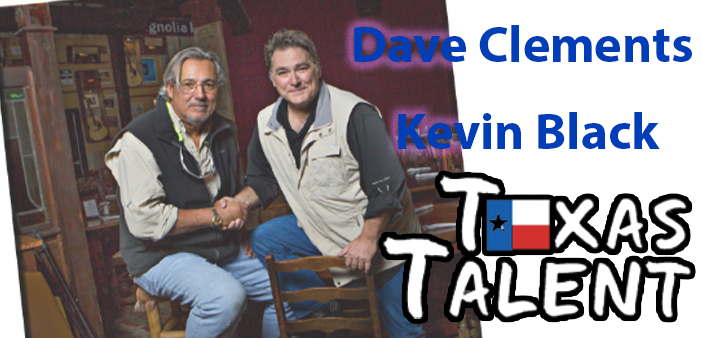Photos by Gina Turner

Lois Blackburne grew up in eastern Kentucky. She had an aptitude for art as a child, but she was the daughter of a coal miner, and there was no money for art lessons. So, Lois taught herself to draw, and then to paint. She did not take an art class until she was in her twenties. In 1978, she moved to Conroe.
Lois recently welcomed the Postcards team to her home, where a collection of lamps and scented candles illuminate rooms filled to overflowing with a variety of striking artwork. Most of it was painted by Lois herself. Even the guest bathroom is decorated with Lois’ art, including a hand-painted porcelain sink. She jokes that decorators would call her home “tastefully overdone.”
A tenured member of the Conroe Art League, Lois is also a member of the Lone Star Art Guild and Oil Painters of America. She teaches art lessons two days a week, but she paints every day and says she plans to do so for the rest of her life. She says, “When I die if I don’t have a paintbrush in my hand, put one there!”
When did you discover you had artistic talent?
It was always my desire to be an artist. I grew up in eastern Kentucky, the daughter of a coalminer. So, suffice it to say there were no art lessons, but it was always in me. I would sit and sketch. Women’s magazines would have drawing contests. As a child, I just knew I was going to win.
How did a girl from rural Kentucky end up in Conroe?
My ex-husband was in the military. We lived five places in nine years, and I am a person who doesn’t like change. I told him, “We’ve got to get out of the military and get some roots.” And we came to Conroe. The first thing I did was join the Conroe Art League. I was in my late twenties. I had done a few paintings in Savannah. When I was in Savannah, I mostly painted seascapes. When we came to Texas, I started painting bluebonnets. I had two small sons. There was no money or time for classes, so I would rock my sons to sleep, and then I couldn’t wait until I got them to bed so I could paint. I would stay up until two in the morning and paint.
How did you teach yourself to paint?
I didn’t think I was grasping it, and I remember one day it all assimilated and came together—all the self-study, all the visits to galleries, reading books, and making lots of mistakes. All that study came together and I said, “Yes, I get it!” I remind my students of that when they get frustrated. I tell them, “Your brain is like a computer. You may not think you are retaining it, but it may just download one day.”
How often do you paint?
I paint something every day in some medium because you have to keep those juices flowing. I painted lying down one whole summer. When I am sick, I will paint in bed. I will paint on the couch. If I’m sick, I may as well do something I enjoy. When my schedule permits, I will take a seminar or a workshop. I recently spent a year working with a master artist, Juan Cantevella. Conroe Art League is very blessed that he chose Conroe as his home, and he shares his immense talents with the gallery. When you have a master among you, you take advantage of that.
What types of painting do you do?
Oils, pastels, watercolor, china painting, and colored pencil. When I first decided I wanted to take a class, I was real young and we were in a military town. I walked into a gallery. An Austrian lady owned it. I told her, “I don’t even know the difference between watercolor and oil. You will have to explain it.” She said, “Honey, oil is a beautiful 50-year-old woman with all of her makeup and jewelry, and watercolor is a 16-year-old girl with a scrubbed face.”

I work in so many different mediums. Even though they have different qualities, they all have the same theory that makes the criteria for a great painting. It’s like music. There’s high key music, there’s low key music. Which is right? They are both right. They’re just different. The subject will let you know which medium to pick, according to what you are trying to say.
Do you have a favorite medium?
It’s like asking me to choose between my children. The different mediums have different personalities. Some of them will give you problems, and other times a certain medium will come out just like you visualized. My favorite is whichever one I am working on at the time, but I have a special love for porcelain, being a dyed-in-the-wool Victorian. China painting is for my own enjoyment. It relaxes me. It’s the most intimate because you are holding it in your hand.
Tell us more about your china painting.
My love of china painting came when I was 16. My ex-husband (then boyfriend) took me to his house. His mother was a china painter and, being from Kentucky, that was the first time I had seen china painting. I said right then, “I want to do that someday.” I give my former mother-in-law credit for the inspiration. The only class I took was a china painting class from a local lady, Etta Burns, a retired school teacher. Every art you do is a layering process. With china painting, you mix paints with mineral oil, and it is painted and fired many times.
When did you begin teaching?
When we lived in Savannah, Georgia, I signed up for a six-week class in acrylics. We painted seascapes. My teacher told me, “I am not going to teach this class anymore at the YMCA. I want you to take over the class.” I was a young artist in my twenties, and I am thinking, “Are you kidding me?” They set up a class for me. The first night, 24 people showed up, and I was just scared to death. I had to split the class. That was my first encounter, and I was terrified.
Later, I would just teach now and then. When the Hobby Lobby opened in Conroe 23 years ago, I started teaching there. A lot of great artists aren’t good teachers. Some things you do intuitively. When you are teaching someone, you have to think about it, and you have to verbalize it on a level they can understand. I still teach two classes a week in all those mediums we talked about. I enjoy it. It keeps me on my toes.

My students inspire me. I have several really advanced, brilliant students, and I have to work hard to stay ahead of them. Sometimes students say, “But I don’t know how to draw or paint.” I tell them, “You wouldn’t be here if you did.” The graveyard is full of people who could have been great artists, but it was never cultivated. The most important part is the drawing. People want to have their chocolate pie before their spinach, but you can’t paint it if you can’t draw it. The first thing I do for beginners is teach them to draw.
Which do you enjoy more, painting or teaching?
I enjoy them both. The teaching allows me to interact with other artists, but when I come home, there is solitude. I have to get in my own head.
And you paint portraits!

Portraiture is the Ph.D. of art. It’s the hardest. You not only have to paint that person as you see them, but you have to see them as the customer sees themselves or their child. It’s a totally different mindset than if I am painting my grandson. If he says, “That doesn’t look like me,” I’ll say, “Who asked you?” There is only one judge when you are working on a commissioned portrait, and that is the person writing the check. People usually prefer portraits in oil, but I also paint many of my subjects in pastel. Pastel has a subtle beauty that lends itself to portraiture, especially when painting children.
What can you tell us about your creative process?
The steps are: getting excited about it, visualizing it in my mind, and the challenge of making it come to fruition. We have been taught that when we paint, we should activate all five senses: sight, of course, and touch. For taste, I have coffee or tea, and I have candles for smell. For sound, I play soft music. Art speaks for itself. As artists, it’s hard for us to elaborate any further. It’s a lonely craft. You are painting alone. You are in your head and, when you are finished, everything you have to say is on that canvas.
Your china painting has been featured in national and international magazines, and you have won several awards. Of which award are you most proud?
I won the best floral at the Lone Star State convention a few years ago. The convention consists of only ribbon winners from across the state from home clubs, and in the spring they all come together and compete. It’s an honor to win a major award on the state level. Most recently, I was voted as the People’s Choice for the month of November at the Conroe Art League show. This award is special because it is voted on by both my peers, as well as the public.
What do you do when you’re not painting?
My art is my passion, but my two sons, a wonderful daughter-in-law, and six grandchildren are my life. My extended family is my church family at First Methodist.
For more information, visit: loisblackburne.com



